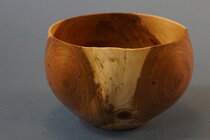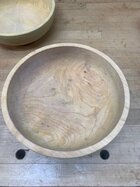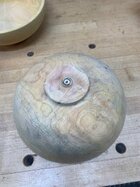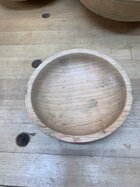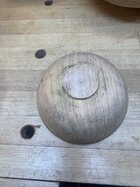I have been making some once-turned bowls from a cherry tree that was dormant and healthy when cut. Mold spots form on the bowls within about 24-48 hours of turning. Not sure about the MC but it is probably high because the wood has been in below freezing temps and is being turned while still frozen so most of the moisture that was in the standing tree is basically locked in until the bowls warm up during drying. The shop temp is about 50 degrees F and the RH is usually low. The mold spots are troublesome because they run too deep to easily be sanded away. Not sure what would be the simplest solution. Basic kiln? Bleach or boric acid wash? Just rough-turn and deal with the mold later during a second turning?
Bowls being dried on a shelf 15 feet from an exterior door without anything to slow drying. Mold forms even if they are not stacked. Very little mold forms on rough-outs sealed with Anchorseal and stacked nearby so I assume the mold spores are in the shop.
Bowls being dried on a shelf 15 feet from an exterior door without anything to slow drying. Mold forms even if they are not stacked. Very little mold forms on rough-outs sealed with Anchorseal and stacked nearby so I assume the mold spores are in the shop.
Last edited:

